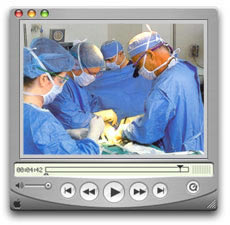Doctors at Chapel Hill Tubal Reversal Center become the first to reverse tubal sterilization by the Adiana technique
October 9th, 2009 (Chapel Hill, NC) – Julia Smith, RN, Nurse Administrator at Chapel Hill Tubal Reversal Center in Chapel Hill, North Carolina, today announced the first successful tubal reversal procedure to repair the fallopian tubes in women who have undergone the Adiana method of tubal sterilization. This is the first pregnancy after Adiana reversal for the newly approved sterilization system.
Adiana sterilization was approved for use in the US by the FDA in July 2009. The procedure can be performed in a physician’s office and involves using radio frequency energy to remove cells in the lining of a small area of the fallopian tubes nearest the uterus. The device itself is then implanted in this prepared area. The Adiana system is similar to the Essure sterilization method in being a non-surgical female sterilization method which promotes scarring to create a tubal blockage.
Dr. Gary S. Berger and Dr. Charles Monteith performed the reversal during a one hour and ten minute tubal surgery procedure. The healthy fallopian tubes were separated from the blockage and tubal implantation was performed through a newly created opening in the back of the uterus. Since the Adiana and Essure sterilization methods involve a small segment of the narrowest part of the fallopian tube, long tubal segments remain after the reversal procedure which is a major factor in tubal reversal success rates. The pregnancy success rates can be found in the latest tubal reversal study available at http://press.tubal-reversal.net/2009/pregnancy-rates-by-age-and-tubal-ligation-method.html
Dr. Berger and Dr. Monteith performed the tubal reversal procedure on a 35-year old woman who underwent sterilization by the Adiana technique as part of an experimental trial to test the new sterilization procedure six years ago. Although she underwent tubal sterilization intending for the procedure to be permanent, the patient’s decision to reverse the procedure was promoted by the unexpected and sudden loss of a child.
Chapel Hill Tubal Reversal Center is the only facility in the United States that specializes in the practice of tubal reversal surgery and repair of blocked fallopian tubes. Patients travel from across the US and from abroad for surgery at the specialty facility with its highly trained and experienced surgeons and staff. Additional information regarding tubal reversal surgery, Adiana reversal and Essure reversal is available at Chapel Hill Tubal Reversal Center, including profiles for Dr. Berger and Dr. Monteith, can be found on the website at www.tubal-reversal.net.

